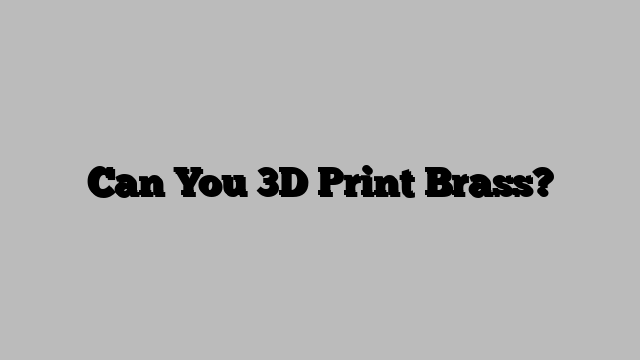Can You 3D Print Brass?
Brass is a popular metal alloy that is often used in jewelry making, musical instruments, and various other applications. It has a distinctive golden color and is highly valued for its unique properties, including its high malleability, ductility, and resistance to corrosion. Brass is commonly used in manufacturing and design industries, and as 3D printing technology continues to advance, the question arises, can you 3D print brass?
The answer is yes, you can 3D print with brass. However, the process of 3D printing with brass is quite different from the traditional methods of casting or machining brass. 3D printing with brass requires the use of a metal 3D printer, which uses a process called binder jetting to create complex parts and shapes.
The binder jetting process involves depositing a layer of metal powder onto a build platform and then selectively spraying a binding agent onto the powder to create the desired shape. The bound powder is then heated to fuse the metal particles together, forming a solid brass part.
One advantage of 3D printing with brass is that it can create highly complex and intricate designs that would be difficult or impossible to produce using traditional methods. Additionally, 3D printing with brass can be a cost-effective way to produce small quantities of parts or prototypes, as it does not require expensive tooling or molds.
However, there are some limitations to 3D printing with brass. The process can be slow, and the resulting parts may not have the same mechanical properties as traditionally cast or machined brass. Additionally, 3D printing with brass can be expensive, as the metal powder and binding agent can be costly, and the process may require additional post-processing steps, such as polishing or plating, to achieve the desired finish.
In summary, while 3D printing with brass is possible, it may not be the best option for all applications. It is best suited for creating complex designs and producing small quantities of parts or prototypes. However, for larger production runs or parts that require high mechanical strength, traditional methods of casting or machining brass may be a better choice.
